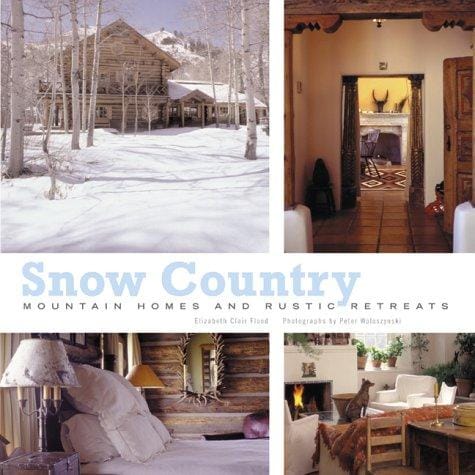The Power of Off-Season Travel: Save Money, Gain Memories
Explore how traveling in the off season unlocks lower prices, deeper cultural experiences, and greener tourism, along with tips and top destinations.

Introduction: Why Talk About the Off Season?
Most travelers instinctively plan their vacations around peak periods—summer holidays, spring break, or festive seasons—assuming that these are the only times destinations truly come alive. Yet a growing number of savvy explorers are discovering the unmatched rewards of venturing out when crowds have thinned and prices have plummeted. The off season, sometimes called the shoulder or low season, offers more than just discounted hotel rooms; it delivers richer cultural encounters, a gentler environmental footprint, and the rare luxury of time and space. This article unpacks the benefits and practicalities of traveling in the off season so you can turn empty queues and cheaper flights into lifelong memories.
What Exactly Is the Off Season?
The term "off season" refers to the stretch of weeks or months when a destination experiences its lowest visitor numbers. The reasons vary—unfavorable weather, school terms, or a lull between major events—but the result is always the same: fewer tourists and lower demand. While some businesses may operate on reduced hours during these periods, most core attractions remain accessible, and the absence of crowds can transform an ordinary visit into an intimate, authentic experience. In ski resorts, for example, off season might mean late spring when the snow is slushy but hiking trails open. For Mediterranean beaches, it might be November, when the sea is still warm yet sun loungers sit empty.
The Financial Advantages You Can’t Ignore
Travel costs hinge on the simple principles of supply and demand. When flights fly half-full and hotel occupancy rates dip, airlines and hoteliers slash prices to lure travelers. According to the Global Travel Price Index, airfare can drop by as much as 40% during shoulder months, while accommodation discounts frequently reach 60%. In addition, tour operators often bundle extras—free breakfast, activity vouchers, or complimentary upgrades—to sweeten the deal. Add shorter lines and zero surge pricing on rideshares, and the off season quickly proves a budgeting powerhouse, letting you allocate funds to experiences rather than mere logistics.
Cultural Immersion: Meeting Locals on Their Own Terms
Beyond saving money, traveling off season fosters meaningful cultural exchanges. In high season, residents of popular cities are often overwhelmed, juggling peak workloads and tourist fatigue. Visit the same city in the off season and you may find café owners with time to chat, artisans unwilling to haggle just to secure a sale, and museum docents eager to dive deeper into niche exhibits. With fewer tourist-oriented distractions, you’re more likely to witness day-to-day life, join local festivals that rarely make international calendars, and savor the authentic rhythm of a place uncluttered by selfie sticks.
The Green Dividend: Lowering Your Ecological Footprint
Overtourism strains local infrastructure, pollutes fragile ecosystems, and inflates housing costs for residents. By choosing to travel when demand is lowest, you help redistribute visitor impact across the calendar year. Fewer people mean reduced pressure on water resources, heritage sites, and public transport networks. Some destinations, such as Croatia’s Dubrovnik and Thailand’s Maya Bay, have even begun restricting high-season entry to protect their environments. Traveling off season aligns your wanderlust with responsible tourism principles, ensuring that beautiful places stay beautiful for generations to come.
How to Identify a Destination’s True Off Season
Pinpointing the ideal off-season window requires more than a quick Google search. Start by checking historical weather charts to balance comfort and crowd levels; a little drizzle may be acceptable, but a monsoon could derail your plans. Next, scan school calendars—both local and international—because holiday overlaps can trigger unexpected spikes in visitor numbers. Lastly, review events schedules on city websites and conference centers; major trade fairs or sports tournaments can temporarily turn a low period into a frenzy. Combine these data points and you’ll uncover pockets of tranquil affordability even at famously busy sites.
Planning Tips for a Smooth Off-Season Trip
While the rewards are rich, off-season travel comes with its own quirks. Build flexibility into your itinerary in case of limited public transport or reduced opening hours. Pack versatile clothing so you can layer up against chilly evenings or sudden showers. If driving, confirm that mountain passes or ferry routes remain operational outside peak months. Above all, communicate directly with hotels and tour providers; they may not advertise reduced hours online, but a quick email can secure a reservation or personalized tour at a fraction of high-season prices.
Destinations That Shine When Everyone Else Stays Home
Tuscany in November
The vineyards are tinged gold, truffle season is in full swing, and agriturismos offer hearty meals beside roaring fireplaces. Crowds? Almost nonexistent.
Kyoto in January
Yes, it’s cold, but temple gardens blanketed in snow feel almost otherworldly. Seasonal ikebana exhibitions and New Year markets heighten the sense of serenity.
Costa Rica’s “Green Season”
From May to mid-June, afternoon showers paint the rainforest in vivid hues, rivers surge for white-water rafting, and wildlife sightings soar while rates plunge.
Rocky Mountain National Park in April
Melting snow opens lower-elevation trails, elk herds roam freely, and lodge prices drop dramatically before summer crowds cram the park’s shuttle buses.
Health and Safety Considerations
Fewer tourists can mean fewer immediate medical or translation services, so research healthcare facilities beforehand and consider supplemental travel insurance. Watch for seasonal hazards such as slippery cobblestones after autumn rain or limited daylight that can hamper mountain navigation. Keep family or friends informed of your itinerary, especially when visiting remote areas that see minimal off-season foot traffic.
Conclusion: Your Best Memories May Wait in the Off Season
Off-season travel flips the traditional tourism script. It rewards patience and curiosity with budget-friendly rates, authentic cultural exchanges, and reduced environmental strain. While it demands a bit more planning and flexibility, the payoff is immense: picture yourself wandering through an empty palace hallway, hearing only your footsteps echo against centuries-old walls, or sharing warm tea with a local who has time to ask about your homeland. These are the moments that shape stories, deepen understanding, and remind us that sometimes the best season to explore is the one everyone else overlooks.



